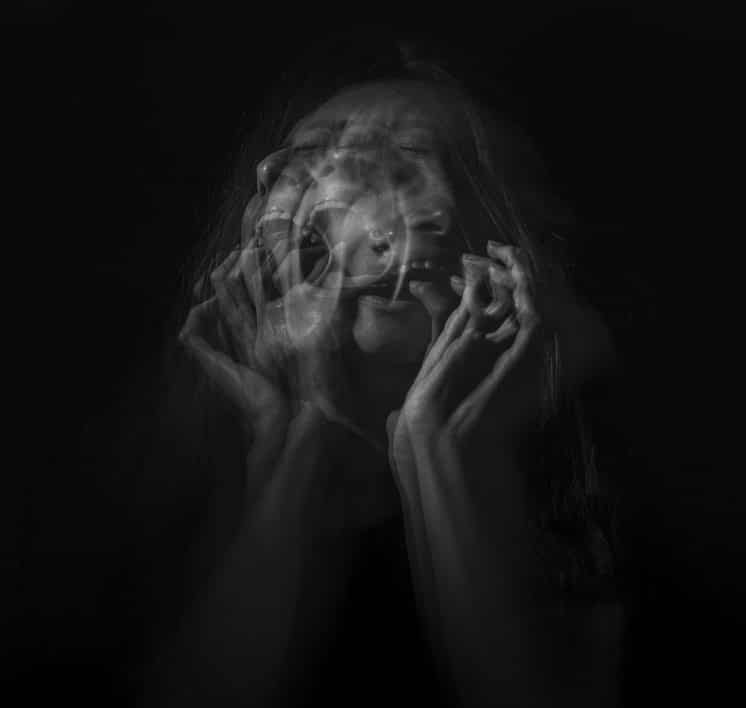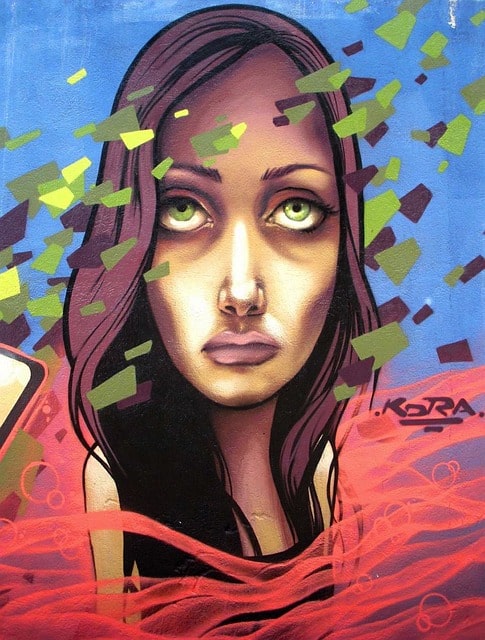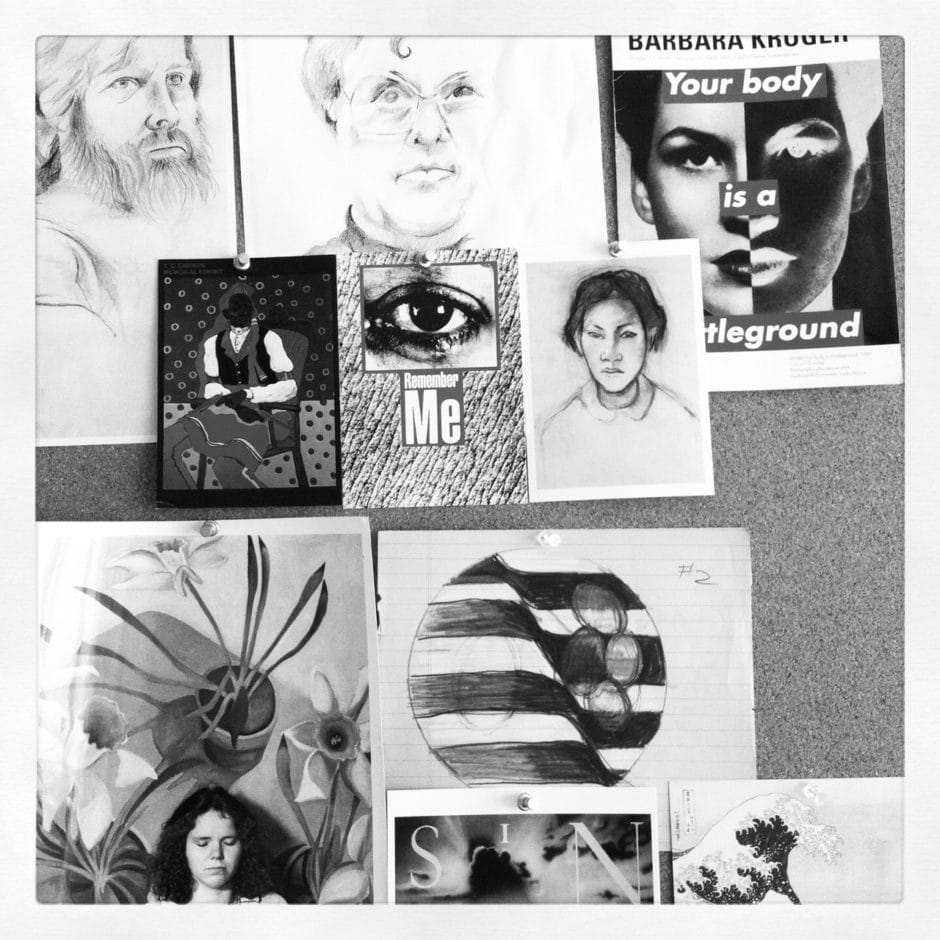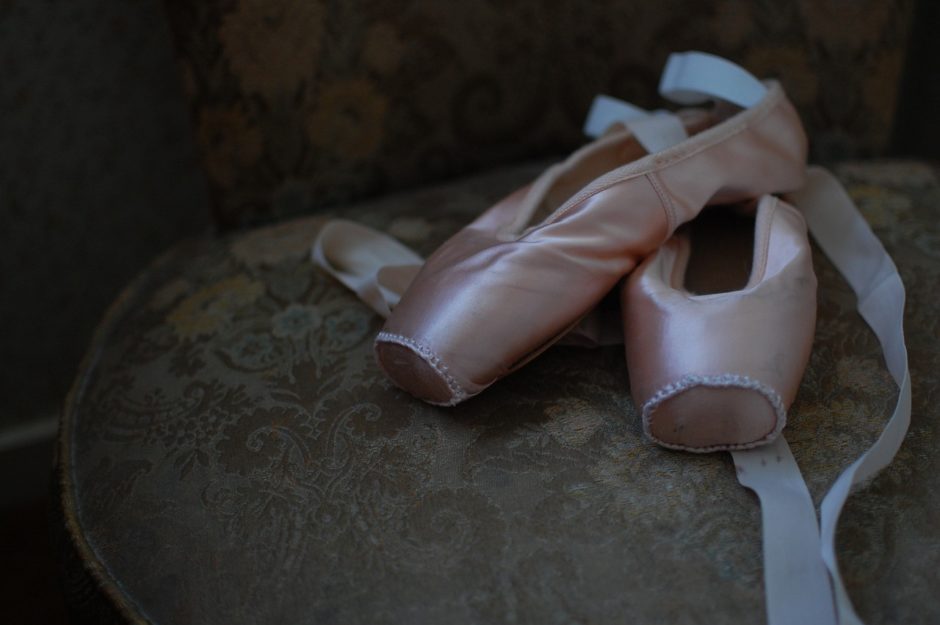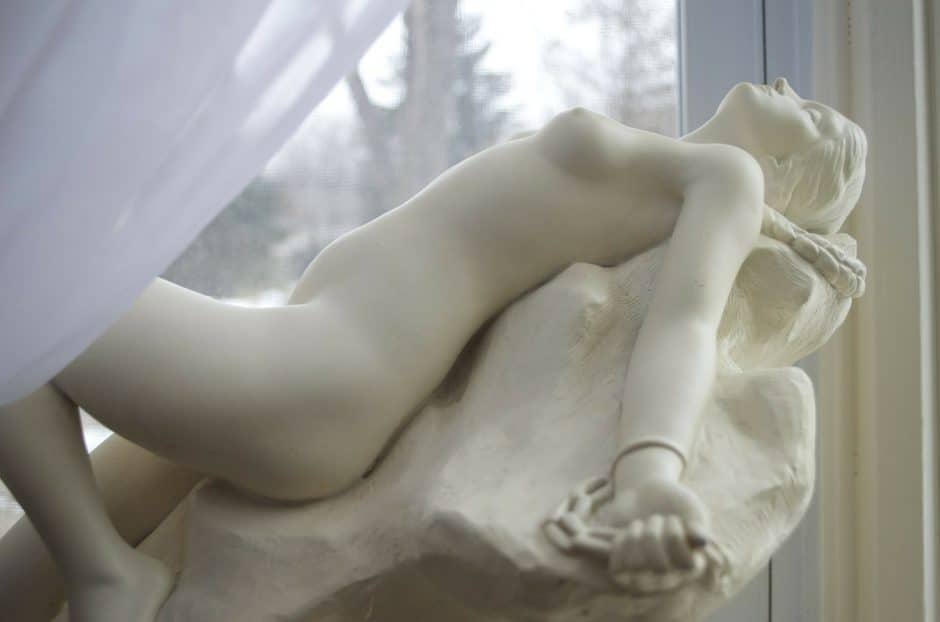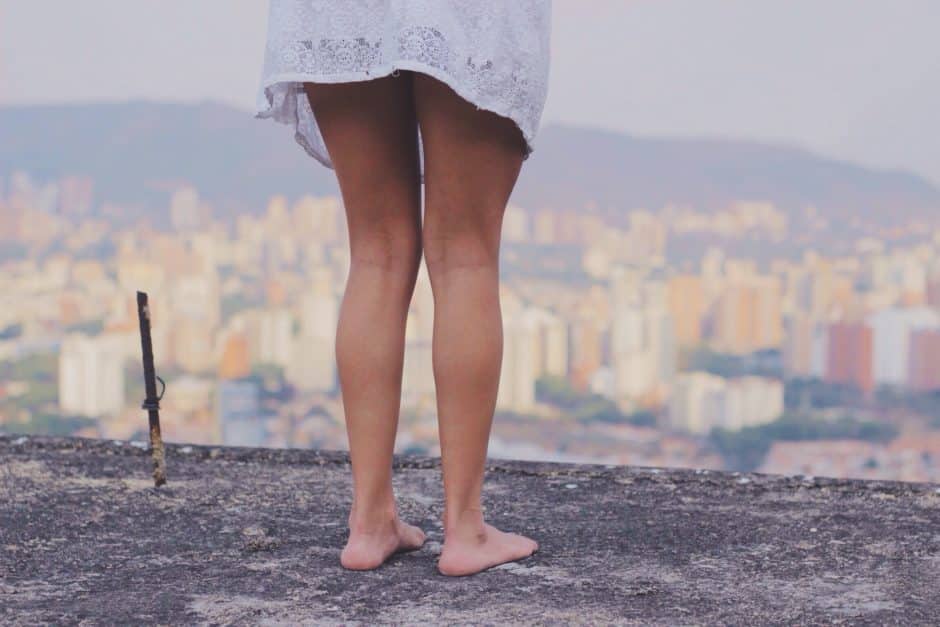2016-present
I first noticed the pain in my leg when I was four months pregnant with my first son. “Sciatica,” everyone told me. After all, it was a plausible enough explanation. Even my OB/GYN kind of shrugged and said, “Eh. Nothing you can do about it. ”
But after a vigorous round of Google hunting, I privately ruled it out and didn’t bring it up to the doctor again.
The sciatic nerve runs down the leg. This pain was incredibly localized, deep within in the hip joint, almost at the groin, but not quite. It’s a nebulous spot that is so buried it feels like it shouldn’t exist. In fact, it was right where I had injured myself eight years earlier, stretching too fast and popping a tendon. Somehow, for some reason (most likely the avocado-sized lump in my uterus), the tendon was hurting again. I couldn’t sleep on my side, couldn’t walk comfortably. It felt like if I stretched, the tendon would snap, and I would become an actual Gumby.
The pain went away almost immediately after I delivered my first son. Poof. My body was accessible to me again. I could sleep on my back. I could sleep on my side. Bliss.
Sadly, after my second delivery, the pain made its home in my hip socket permanent. It revives itself when I do too much. Too much walking. Too much squatting. Too much sitting. Too much feeling.
This was two and a half years ago. Now, I accommodate the pain. Keep weight off the hip. Strengthen the surrounding muscles. Don’t push myself too hard.
My life is an exercise in accommodation.
February 2021
The pandemic has dissolved so much from my life.
Work. I had some at first and it drizzled away, as if there were a crack in the floor of my career and all teaching assignments just slid down.
All the ordinary happenings in a life are gone. Spontaneous trips to get ice cream, pop into a shop, play at the park. Vanished.
My friendships have shifted, melted, and scattered away. Texts are fragmentary check-ins.
How are you doing?
Hanging in there.
Same.
Can’t wait to see you again.
Miss you.
Love you.
Some friends already do things with other people, make plans, and see each other at a distance. I try to do it a few times, but each time my kids struggle with the idea of personal space, spilling all over each other like the four and two they are. Unshackled in their innocence, unbound by science. It is my job to keep them safe, to keep my immunocompromised husband safe, so I stop making plans with people. Eventually, people stop asking me.
I am equal parts sad and relieved.
The world contracts significantly. These boys who became my world when they were born are now, quite literally, my world. They occupy my every waking—and sleeping—moment. I sleep with the youngest one, who sneaks into bed as I am in deep sleep every single night. I don’t notice he’s there until I awaken next to his warm, lavender-chamomile scented hair. I tote him around like an extra limb, as he needs a little more of me than my eldest did. More holding, more snuggles. His twenty pounds has enlarged over the course of the year, and now it is like permanently lugging around a squishy, wiggly set of dumbbells.
And the talking. Dear god in heaven, the talking.
Mama, can you get me some more ketchup?
Mama, he took away my medical kit!
Mama, he pushed me!
Mama, I want some chocolate milk.
Mama, did you know that T-rex is my favorite dino?
Mama, this is not the right toast! I said I wanted jelly toast!
The litany of name repetition wears on me. Being forever needed.
What do I need?
1982-present
I am no stranger to pain. In fact, we are often friends. If something does not hurt on my body, if something is not malfunctioning, then I find myself shifting my weight uneasily, stretching out, testing its limits. Chronic childhood tonsilitis. Chronic rhinitis. Chronic knee pain from worn away cartilage. A respectable inventory of broken bones. Aching pre-arthritic joints. Chronic recurrent virus, or whatever the medical community is now calling long-term recovery from a rare virus they know nothing about. Childbirth, twice. DTs—cool alcoholic lingo for delirium tremens—otherwise known as detoxing. Abuse.
I could go on, but it gets boring, all listed out like that. Pain is unremarkable and unremitting. How it affects you is what makes it interesting.
2018-2019
The next pain like this—unexpected, arriving without warning nor acute injury—came to me after my second son, in my left arm, at the shoulder/bicep intersection. I clearly lift too much weight, too often. This is a stress injury from balancing babies on my left hip without ceasing. I sit them there while I cook, make phone calls, walk around the house picking up tiny kid crap. Discarded shoes. Duplo Legos. Cheese-It fragments. I lift the car seat to-and-from the car, to-and-from the stroller, to-and-from the shopping cart.
“Stop lifting the babies! You’ll just keep reinjuring it!” my husband scolds with care and frustration crumpled together in his brow, knowing I will not listen to him.
Who else will carry them all day? They are babies, both under three at this point. One a living, breathing football-sized lump who cannot move around unaided, and one still not potty trained. I am taking an unpaid semester off teaching, so the answer is me. I will carry them all day.
December 2020-March 2021
This year, the year of the pandemic, there are some new pains in the mix. I sprained my ankle and/or broke my foot. I am too chicken shit to go to the ER and get an X-ray, so I wait three weeks before visiting my primary care physician, tail between my legs and brace on my ankle.
“You think you broke your foot, and you waited three weeks to seek medical help?” the doctor asked, trying to hide his incredulity. I really don’t like my doctor.
“I mean, the sprained ankle is bothering me most,” I add, as if that makes one iota of difference in the situation.
In fact, this is the second time I have sprained my ankle, and the second time I ignored it.
February 2021
It is starting to get ridiculous, though. For the past few weeks, I have noticed pain in my elbows. It gradually, steadily worsened until I couldn’t lift my coffee cup with my left hand anymore.
“I can’t lift my coffee cup,” I say one morning, surprised by my arm’s inability to power through. It’s just a bit of pain, right?
“For god’s sake, go to the doctor,” my husband says, eyes on his phone. This is not the first time he has said this.
I don’t usually complain about my pain. I point it out, like pointing out a Volkswagen Thing or a building with Art Deco friezes. Unusual, but certainly nothing to pause life over.
“This is why we have insurance,” he reminds me. I actually need reminding, because I forget this all the time. For most of my life, insurance was strictly aspirational.
2020-2021
Clearly, I am fraying at the edges. Not just at home, not just in my body. With so much in real life suspended, I have come to rely a lot on my online friendships. Then, a few people I think of as good friends stop interacting with me. They just…disappear. What are these relationships, that I think about and am invested in for so much of every day? Honestly, I am not sure. I care deeply about a lot of these people. Do they care about me? A specific interaction with one person leads me to say no, but the follow up interactions from a dozen friends asking if I’m okay lead me to say yes. The data is unclear.
My time online is now fraught. Are my friends going to be fighting? Am I going to be able to remove myself emotionally from this? Will I obsess about someone who is ignoring me? Will someone say something that hurts my feelings? Will I feel left out alone, ostracized, wrong, unaccomplished, stupid? Will my anxiety prevent me from being present with my children (again)?
I am rapidly approaching middle age, and suddenly notice that I am spiraling, as if this were high school, with the power to provoke tears and agony over my social status. This realization drills into my very core. I started drinking to stifle feelings like this, impulses like this. The way I twist myself into pretzels to gain people’s approval. The way I enter into everyone’s problems and embody them. The way I agonize about the wrongness of everything about me.
Though I don’t leave the house much anymore, don’t see anyone beyond my immediate family, I remove myself from Facebook.
1982-present
A few years ago, I found out I have hypermobility. I can do the splits and bend my arms in unusual ways. This causes a host of joint and muscle problems I won’t go into, but the chronic knee pain has been the hardest to deal with over the years. From stress and misalignment, my bones pull my cartilage out of place. The only ways I can alleviate the pain is to build supportive muscles in my legs and force myself to walk with my legs straight. This feels unnatural, but also relieving. As if being myself is an unnatural state that needs correcting.
February 2021
“Tennis elbow,” the doctor said almost immediately when I pointed out the location of this pain, new pain. “When the muscles are overworked but underdeveloped, the tendons get strained.”
Goddammit. Tennis elbow? From what? Wiping butts and lifting babies?
Oh.
March 2021
By the sixth week of wearing the ankle brace, my ankle is decidedly not better. I up my physical therapy routine, the one recommended in the pamphlets my doctor thrust at me. In addition to tracing the alphabet, caps and no caps, with my foot, I now add some stretching and lifting exercises. What I do not decide to do is go back to the doctor.
The absence of my once-daily walk is beginning to wear my edges even further. Physical exercise helps keep the madness at bay, behind the bars of its cage. Recovering addicts have little in the way of traditional coping mechanisms, after all. I stretch out obsessively, like a rubber doll.
I write a lot more. I stay off Facebook. Do my friends even notice my absence? I wonder what I’ve missed. I try to sit with the discomfort, like the therapists and mindfulness gurus instruct.
This is uncomfortable. It is okay to be uncomfortable. This will pass.
This is the first time I have ever tried this in my life. Letting myself be uncomfortable. It sort of works. I hate it.
April 2021
“Mama, hode me. Hode me,” my littlest says, big brown eyes and chubby cheeks my undoing, as always. I relent, picking him up, and immediately regret it as my forearms burn. But I don’t put him down. How much can I carry before my arms fall off, the ragged seams finally giving way and disintegrating?
March 2021
I speak to so few people my voice starts hurting after reading to my kids that night.
April 2021
Here I sit, wrapped ankle shoved uncomfortably into shoes not designed to accommodate a walking brace, arm wrapped in another brace that supports the weary tendons. I lift my coffee with my other hand, which also hurts, but not as much. I don’t get up when the kids call for me because I can tell they’re just bickering. I pick up a book and ignore my loneliness.
March 2021
“The ankle looks fine,” the doctor said, when I come back in for a follow up to the x-ray I finally got around to getting. “No break. Just a sprain. Is it bothering you?”
“Not really, not anymore,” I lie. It just comes out of my mouth, unbidden. Reflexive.
What is a little pain?
In truth, it was throbbing because I tried my luck without the brace today. After eight hours of excessive care, gingerly stepping over piles of Magna-tiles and spilled ketchup, the ankle was protesting. It was protesting motherhood. It was decrying its lack of support. It was renouncing this goddamned pandemic.
The doctor didn’t ask about my tennis elbow, and I didn’t bring it up. What I was really there for was a referral to a therapist. I could handle the physical pain, which was fading, anyway, what with the help from physical therapy exercises. And who ever died from tennis elbow, anyway?
February 2021
Scrolling on Facebook for a minute, I check in so that my account doesn’t disappear forever, and realize there is nothing there for me. I don’t belong there—right now, at least. I won’t until I am able to weave myself back together. A sturdier, more complete version of myself. I have no expectations for when this will be.
March 2021
The pandemic is ending, according to everyone. One day our hospitals were spilling over with COVID patients and exhausted healthcare workers, and a few weeks later L.A. County is opening up indoor dining again. I have half a dose of the vaccine. It is positively surreal: a miracle through and through. This is almost too much to cope with, and I randomly cry at the sight of a favorite restaurant welcoming diners or kids at the high school playing team sports. The thought of resuming my old life, though?
I don’t want to go back. I am fundamentally different now. I can’t go back.
I sit with these prickly feelings. I let myself cry and I let myself feel the pain. I bathe in this discomfort.
It will pass. No pain is permanent.
It changes shape and we build walls around it, accommodating it, crushing it, suffocating it, allowing us to move on with life even as it controls so much of what we do. It can become part of us, shaping who we grow into like strange casts. And if we have the patience, we can listen to what it is telling us about ourselves.
Are you listening?
I am, now.
Natalie DeYoung is a writer from the Los Angeles area. A winner of Blogher’s Voice of the Year twice, Natalie DeYoung was also invited to read her selected essay for the keynote at Blogher 2016, as well as perform as a guest judge for Blogher 2017. She has been has been a freelance writer and contributing editor at YeahWrite since 2013. An adjunct professor of English, she is currently working on a memoir about her experience with recovery from addiction.
***
Writing Cohort Opportunity
Circe is offering: Crucible – A Year-Long Writing Cohort
Let by Gina Frangello and Emily Black, this cohort is designed for writers seeking to spend a year deeply immersed in writing or revising a book length work.
Email info@circeconsulting.net for more information
***
Statement on Black Lives Matter and support for social change


